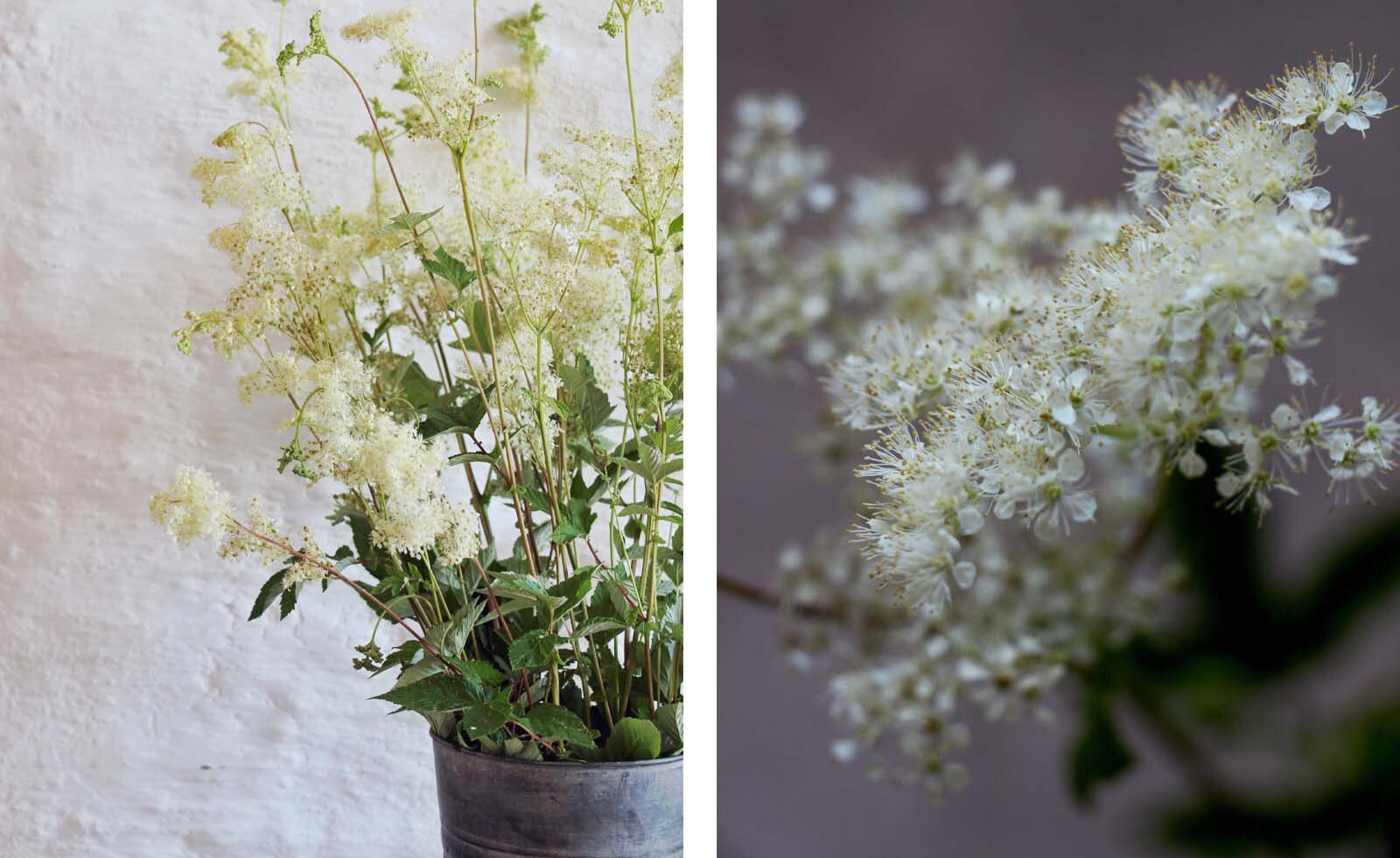Meadowsweet: The Ingredient Edit
Meadowsweet thrives in damp soil and is to be found in great swathes along the riverbanks and through the water meadows at Thyme. Native to Europe, introduced to North America, it is an unsung hero of the countryside - delicate, beautiful and incredibly beneficial to wildlife. Flowering from June to August, the blooms are an essential food source for bees, hoverflies and moth caterpillars.
From root to bloom, the plant is both edible and medicinal. The use of Meadowsweet has been documented as far back as the Middle Ages; one of the three herbs held sacred by Celtic Druids, and most importantly used to flavour mead, giving way to its folk name “Mead Wort”.
Rich in salicylic acids, Meadowsweet has been used to target moderate pain, such as headaches, and it was a study of this plant that lead to the synthesis of aspirin in 1897. Its anti-inflammatory properties are said to aid digestion, soothe stomach ulcers, reduce the visible effects of inflammatory skin conditions and help to relieve migraines.
The delicately floral, sweet almondy flavour is totally unique and incredibly versatile. The roots can be crushed and cooked to add a subtle flavour of nuts or chewed raw as herbal pain relief. The crinkled leaves can be steeped in hot or cold water to make a deliciously fresh and summery infusion, with the added benefit of acting as a digestive aid – perfect after a summer barbeque! The flowers can be used in a similar way to elderflower in cordial, sorbets and fruit salads.
We have ingredients in abundance growing in our gardens and wild spaces, many of which are not cultivated but emerge in the spring of their own accord. Something about the wildness of these ingredients makes them very special, they are perfectly adapted to their environment and have been growing in the same areas for hundreds of years. Meadowsweet is a true example of a seasonal ingredient, only with us for a few short months, it is an indicator that summer has really arrived. Whether you find your Meadowsweet in a cocktail or in a summery jam, in a bunch of flowers or a herbal infusion, perhaps part of what makes it so lovely is the connection it gives us to the countryside and our foraging ancestors. They might have been picking the leaves from the very same meadows as we are, seeking inspiration for culinary or medicinal invention. Although, they were perhaps not combining the herb’s floral flavours with aromatic whiskey and sherry …


